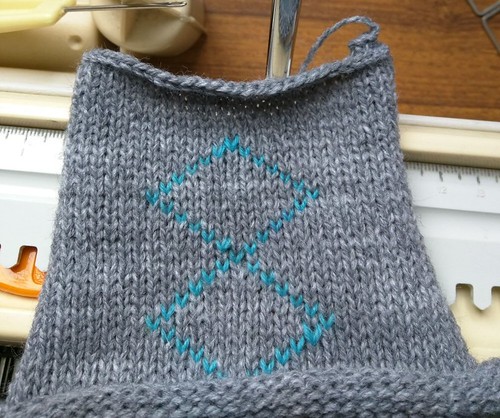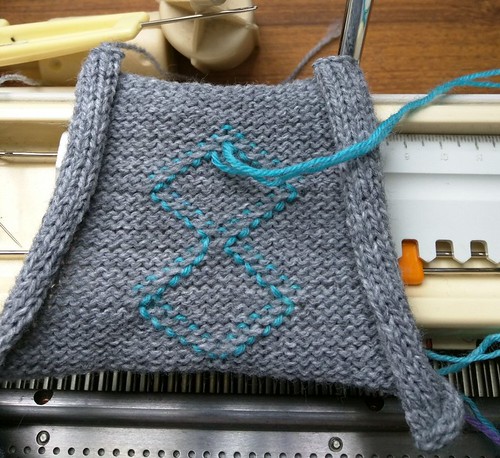The premise is, you have a length of the contrast yarn. When you get to where you want to knit that yarn, you knit it manually back to A or non-working position, then knit a row with the main yarn. Pull the stitch back to size, knit the next stitch (or stitches) back to A with contrast, knit across, repeat until you are done. For some reason not explained in the original article, they knit two rows, so the contrast stitch is two rows high - I don't know why that is necessary! This produces a lovely effect and would be great for small areas of lines. Wouldn't work so well for blocks of colour though as it's hard to match the tension.
It's quite a nice embossed effect on the purl side, too! Because the contrast yarn is added manually you only get small floats with the main yarn.


Current mood:
 thoughtful
thoughtful

No comments:
Post a Comment